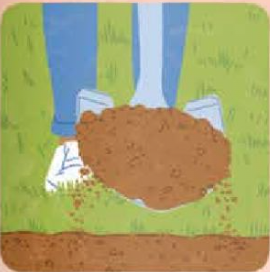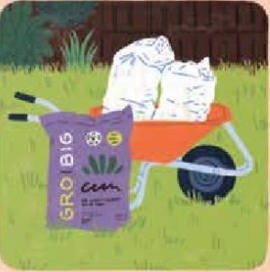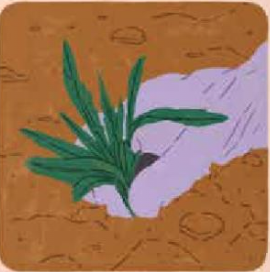After last summer’s record-breaking drought, Albertans are rethinking their yards. Carpets of thirsty grass lined with beds of blooms may not be practical for hotter, drier conditions. Which is why xeriscaping is growing on more homeowners. “It’s a low-water, low-maintenance style of landscaping that features native, drought-resistant vegetation,” explains Sara Williams. Williams is a horticulturist and author of Western Canada’s definitive guide on the subject, Creating the Prairie Xeriscape. “Grass is one of the highest water users of all plants,” she adds, noting how beautiful and lush drought-tolerant landscaping can be. “It’s not all rocks and gravel!” Follow a few basic principles to give it a “grow” in your yard.
Artwork by Katie Carey
PLAN AND DESIGN

Water conservation is the cornerstone of the xeriscape process. Begin with a scale drawing of your yard, grouping together plants with similar water needs. Place plants that need more water where you’ll see and enjoy them most.
LIMIT TURF AREA

Lawns need a lot of water. On average, about an inch-high layer over the soil per week while growing. Grass also needs a lot of care, with focus on mowing and weeding. Replace portions of lawn with low-maintenance ground-cover, native grasses or hard surfaces like paving stones.
IMPROVE SOIL

Moisture-retaining soil encourages plant growth. And organic
matter helps retain moisture. “In prairie soils, organic material originates from the decaying roots of native perennial grasses,” Williams notes. Improve your soil with well-rotted animal manure, compost or peat moss.
CHOOSE PLANTS

Pick plants that are drought-tolerant, visually appealing and native to your region or climate. Aim for a mix that bloom at different times of the year. Good options for Western Canada include: Scots pine, flowering crabapple, subalpine fir and Siberian larch.
Garden growth for less: Save 10% on select regular priced seed packets, fashion, house plants, perennials and planted hanging baskets.
MULCH

Mulch captures moisture, prevents wasteful runoff and reduces weeds and pests. You don’t necessarily need store-bought mulch. Consider organic materials like bark, post peelings or pine needles and cones. Scatter a four-inch layer covering the soil surface between plants.
IRRIGATE

To establish plants, water deeply but less frequently. “The entire root should be filled with water and the soil allowed to partially dry out before the next watering,” Williams advises. To avoid wasting water, use timed drip irrigation, a soaker hose or hand water.
MAINTAIN

Though you’ll spend less time on upkeep than traditional yardscaping, you should still keep watch. Periodically pull weeds, prune shrubs, rake leaves and top up mulch, if needed. And ensure your irrigation system is in good working order to avoid drowning or drying out plants.
MORE TO READ
Don’t want to xeriscape? Grow plants indoors. Here’s how to be a good houseplant parent.
